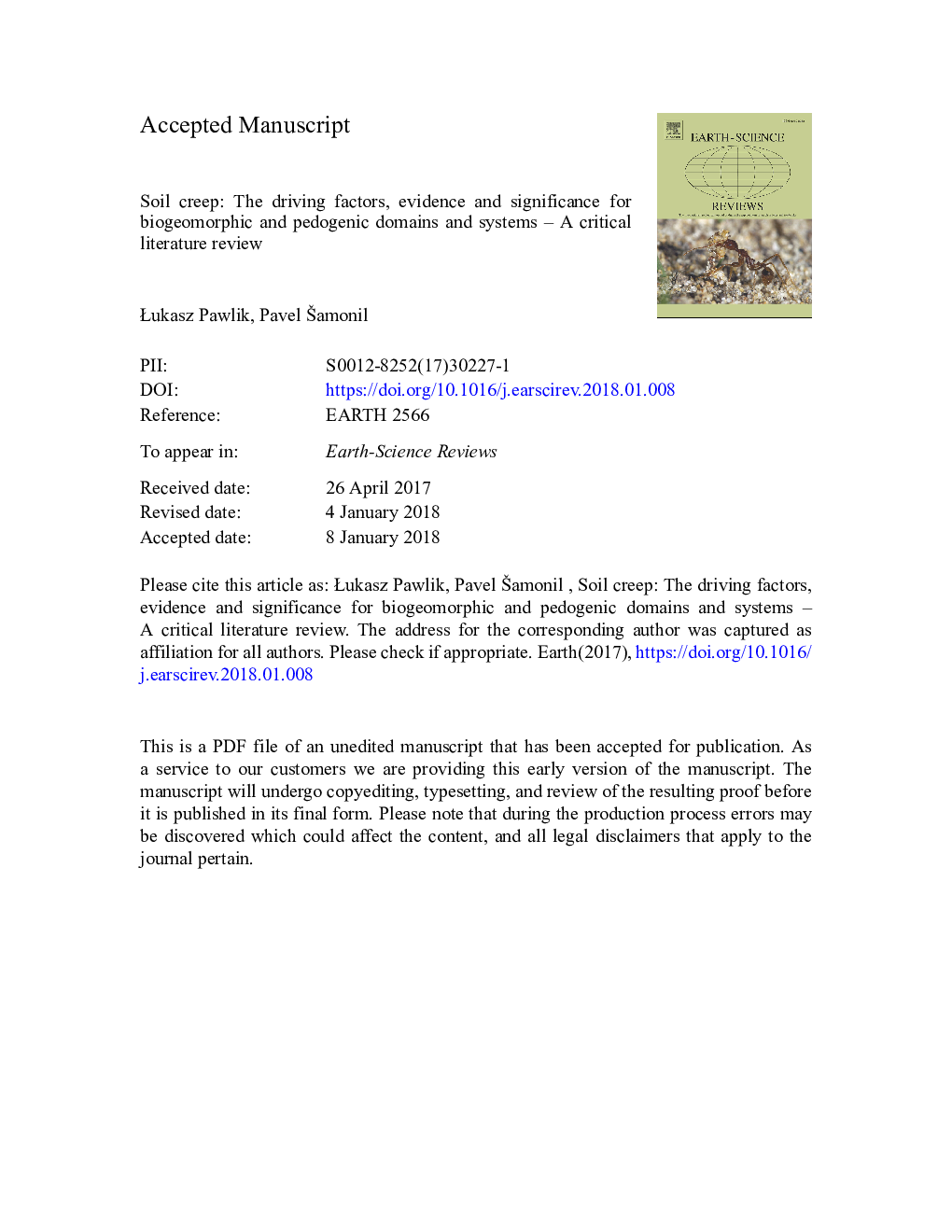| Article ID | Journal | Published Year | Pages | File Type |
|---|---|---|---|---|
| 8913007 | Earth-Science Reviews | 2018 | 67 Pages |
Abstract
In this paper we focus on the historical context of soil creep studies, and highlight forest ecosystems as probably the most active environment of biogenic creep, mainly due to tree uprooting and other biomechanical effects of living and dead trees (root channel infilling, tree root mounding etc.) that are a factors in biotransport. In the final sections the position of biogenic creep in the structure of biogeomorphic systems is discussed in relation to such important conceptual frameworks as the biogeomorphic ecosystem, biogeomorphic feedback window and ecosystem engineering. We also describe several hypotheses that should be carefully tested in the future, and propose several research methods that have the ability to further our knowledge about soil creep: radiometry, laser scanning and soil micromorphology.
Related Topics
Physical Sciences and Engineering
Earth and Planetary Sciences
Geology
Authors
Åukasz Pawlik, Pavel Å amonil,
